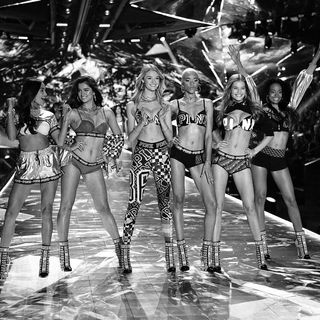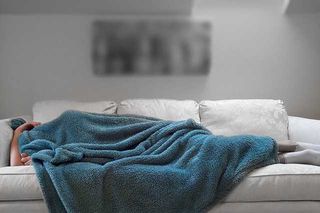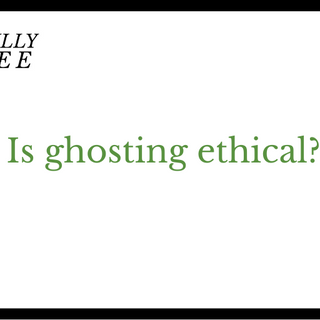
To Nap or Not to Nap? That Is the Question
Research says when you nap, and for how long, often determines how rested you feel after.

I despise naps. While I certainly feel the need for them around early to mid-afternoon (I wake up at 7 every morning), I know if I succumb to the drowsiness, I’ll hate myself. The waking up part of the nap is horrid — a dry, itchy throat makes me feel I’ll be dehydrated forever; the intense disorientation and dread accompanies fear that a large part of the day might be over, and all of the above contribute to immense crankiness that makes me impossible to be around one to two hours after I’ve awakened from a nap. But to my surprise, people around me seem to be able to glean the seemingly miraculous power of naps, indulging only for the better part of an hour, maximum, and waking up feeling they can conquer anything.
Are naps the miraculous refresher course everyone says they are, or are they completely overrated like I say they are?
“Although naps are often stigmatized as a sign of laziness or unproductivity, they can also be very beneficial for workplace performance,” Shelby Freedman Harris, a sleep specialist focusing on insomnia, writes for HuffPost. “Short naps have been routinely demonstrated to reduce accidents and mistakes while also improving attention, concentration, performance, and alertness. Naps also help boost your mood and ability to manage stress.” Harris adds, “naps can be used proactively to gain energy for a late night out. They can even be used effectively to combat drowsy driving when a short snooze is taken just before getting behind the wheel or using heavy machinery.”
Related on The Swaddle:
How Much Sleep Do You Really Need?
But science says naps are not a one-size-fits-all kind of activity. “Napping at the wrong time of day or for too long can backfire,” according to the Mayo Clinic. While naps can provide relaxation, reduce fatigue, increase alertness, improve mood, performance and memory post waking up, these positive effects depend upon the time the nap is taken, and the duration of the said nap, according to the Mayo Clinic.
Keeping naps short is key: “Aim to nap for only 10 to 20 minutes. The longer you nap, the more likely you are to feel groggy afterward,” the Mayo Clinic advises. This could be because the longer you nap, the more likely you are to enter deeper stages of sleep, getting out of which is more difficult, and therefore more disorienting, Harris writes.
Early afternoon is the best time to take naps: “Napping after 3 p.m. can interfere with nighttime sleep. Individual factors, such as your need for sleep, your sleeping schedule, your age, and your medication use, also can play a role in determining the best time of day to nap,” adds the Mayo Clinic.
Veering away from these two simple rules for naps — short ones in the early afternoon — can cause sleep inertia in some, i.e. the groggy and disoriented feeling people like me experience post-naps. “Sleep inertia is when the brain wants to keep sleeping and complete a full sleep cycle,” sleep medicine physician Dr. Cynthia Bodkin told Greatist. “How strong the sleep inertia is, depends on how sleep-deprived one is.”
For people who suffer from insomnia or poor sleep quality on top of that, it becomes even more paramount to take care of the time you take naps since long naps can compromise the more important nighttime sleep.
Harris advises that if you can’t get through the day without feeling the need for naps — regardless of if they work for you or not — then a trip to the doctor may be on the cards. High levels of depression and stress can cause excessive sleepiness in the daytime and need to be worked through, with a mental health professional.
As for my predicament, science has another explanation: hating naps might be a function of genes. According to a 2019 Rutgers University study published in Current Biology, researchers identified a “daywake” gene in fruit flies that can both activate and suppress the need to nap. On warm days, the “daywake” gene increases the desire to nap, as scientists found certain species nap more when it’s hot outside, perhaps to protect themselves from overexposure to the heat. On cool days, they found the “daywake” gene suppressed the need to nap in order to promote productivity.
Related on The Swaddle:
Genes, Not Grit, Determine People’s Ability to Function Normally on Less Sleep
“This gene contributes to behavioral flexibility, or the ability to hide from the noontime sun when weather is hot but engage in activities good for survival when the weather is cool,” study co-author Isaac Edery said in a statement. “Although the daywake gene is not present in humans, our finding reinforces the idea that nighttime sleep and daytime siesta are governed by distinct mechanisms and serve separate functions for health and survival.”
But another 2018 study from the University of Tsukuba in Japan, published in the journal Proceedings of the National Academy of Sciences, found another basis of liking versus hating naps encoded in genes; researchers found mice with a certain gene mutation got less REM sleep at night, which could be linked to needing more frequent naps during the day.
“More than 85% of mammalian species are polyphasic sleepers, meaning that they sleep for short periods throughout the day. Humans are part of the minority of monophasic sleepers, meaning that our days are divided into two distinct periods, one for sleep and one for wakefulness,” according to the National Sleep Foundation. “It is not clear that this is the natural sleep pattern of humans. Young children and elderly persons nap, for example, and napping is a very important aspect of many cultures.”
To nap or not to nap, then, is determined by many factors, some that are out of one’s own control — hectic workdays leading to sleep deprivation might put in place a vicious cycle of needing naps but not being able to get them. Sleep disorders or mental health issues might, in turn, exacerbate this situation and compromise nighttime sleep as well. The decision to take naps, then, often hinges on if you can, at all. But if you do have the time and ability, short, early-afternoon naps might be the only constructive option.
Rajvi Desai is The Swaddle's Culture Editor. After graduating from NYU as a Journalism and Politics major, she covered breaking news and politics in New York City, and dabbled in design and entertainment journalism. Back in the homeland, she's interested in tackling beauty, sports, politics and human rights in her gender-focused writing, while also co-managing The Swaddle Team's podcast, Respectfully Disagree.
Related


Backlash Against the #MeToo Movement Shouldn’t Overshadow Its Significance, Successes
